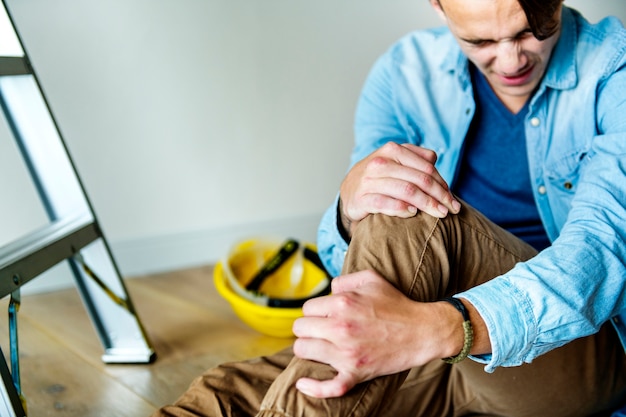
freepik.com
One moment, you’re walking through a store, office, or sidewalk—the next, you’re on the ground, pain shooting through your body. Slip and fall accidents happen in an instant, but the aftermath can leave you grappling with medical bills, lost wages, and unanswered questions. Who is responsible? How do you prove it wasn’t your fault?
Establishing liability is the key to securing justice and ensuring you’re able to be compensated for all of your injuries after a slip and fall. Property owners, businesses, and even government entities have a legal duty to maintain safe premises—but when they neglect that responsibility, victims must take action. The path to holding them accountable starts with understanding the evidence, legal standards, and steps needed to build a strong case.
In the following sections, we’ll break down how to prove negligence, what evidence matters most, and how to protect your rights after a fall. Whether it’s a wet floor, uneven pavement, or poor lighting, knowing how to establish liability could mean the difference between a dismissed claim and the compensation you deserve.
How Victims Can Establish Liability in a Slip and Fall Case
Slip and fall accidents often seem straightforward, but proving liability requires careful attention to detail. Unlike other personal injury claims, these cases hinge on whether the property owner or manager failed to uphold their legal duty of care.
To succeed, victims must demonstrate negligence—showing that the hazardous condition existed, the responsible party knew (or should have known) about it, and that their inaction directly caused the accident.
1. Identifying the Hazardous Condition
The first step is determining what caused the fall. Common hazards include:
Wet or slippery floors (from spills, leaks, or weather conditions)
Uneven flooring, broken tiles, or loose carpeting
Poor lighting in stairwells or walkways
Cluttered aisles or obstructed pathways
Lack of warning signs around temporary dangers
If the dangerous condition was temporary—like a freshly mopped floor—the victim must prove the property owner had enough time to address it. For long-standing issues (such as a cracked sidewalk), the argument shifts to why the owner neglected repairs despite having ample opportunity.
2. Proving the Property Owner Knew (or Should Have Known) About the Danger
A key challenge is establishing that the at-fault party was aware of the hazard. Victims can use:
Surveillance footage – Many businesses have cameras that may have captured the accident or the hazard’s duration.
Maintenance records – If the property owner had prior complaints or work orders related to the issue, it strengthens the claim.
Witness statements – Employees, customers, or bystanders may confirm how long the danger existed or whether warnings were absent.
Incident reports – If the victim or others reported the hazard before the accident, it proves negligence.
In some cases, the law applies “constructive notice,” meaning the property owner should have discovered the danger through reasonable inspections. For example, a grocery store should routinely check for spills, especially in high-traffic areas.
3. Demonstrating How the Hazard Caused the Injury
Even with proof of negligence, the victim must connect the hazard directly to their injuries. Medical records, photos of the scene, and expert testimony (such as from a doctor or safety inspector) help establish this link. For instance, a torn tendon from a fall on broken stairs is more compelling if X-rays and physician notes confirm the injury’s severity and cause.
4. Overcoming Common Defense Tactics
Property owners and insurers often argue that:
The victim was distracted (e.g., using a phone) and not paying attention.
The danger was “open and obvious,” so the victim should have avoided it.
The victim was trespassing or in a restricted area.
Strong evidence, like timestamped photos or witness accounts refuting these claims, is crucial. Comparative negligence laws may also apply—if the victim shares partial blame, their compensation could be reduced proportionally.
Taking Action to Protect Your Rights
Time is critical after a slip and fall. Victims should:
Seek medical attention immediately (delayed treatment undermines injury claims).
Document everything – Take photos of the hazard, injuries, and surrounding area; note weather conditions or poor lighting.
Consult a personal injury attorney – Legal experts can gather evidence, negotiate with insurers, and file a lawsuit if necessary.
Conclusion
Establishing liability in slip and fall cases demands a strategic approach. By proving negligence through evidence, witness testimony, and expert analysis, victims can hold property owners accountable. While insurers may push back, thorough documentation and legal guidance maximize the chances of a fair settlement. If you’ve been injured due to unsafe conditions, taking swift action ensures you don’t bear the financial burden of someone else’s negligence.